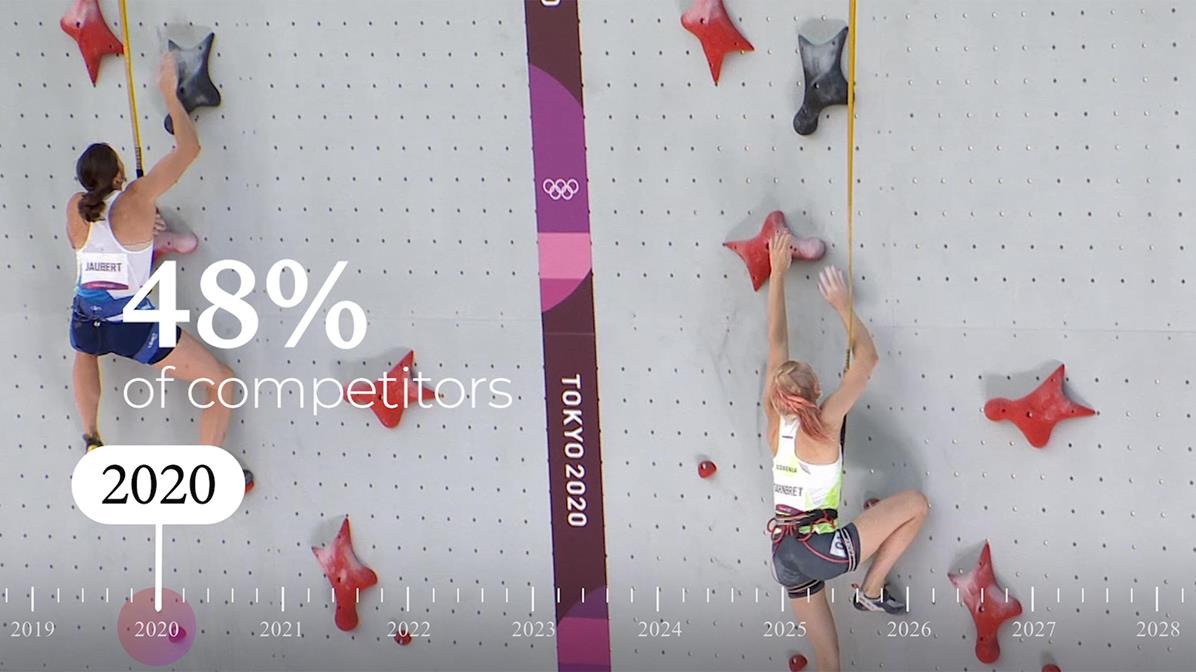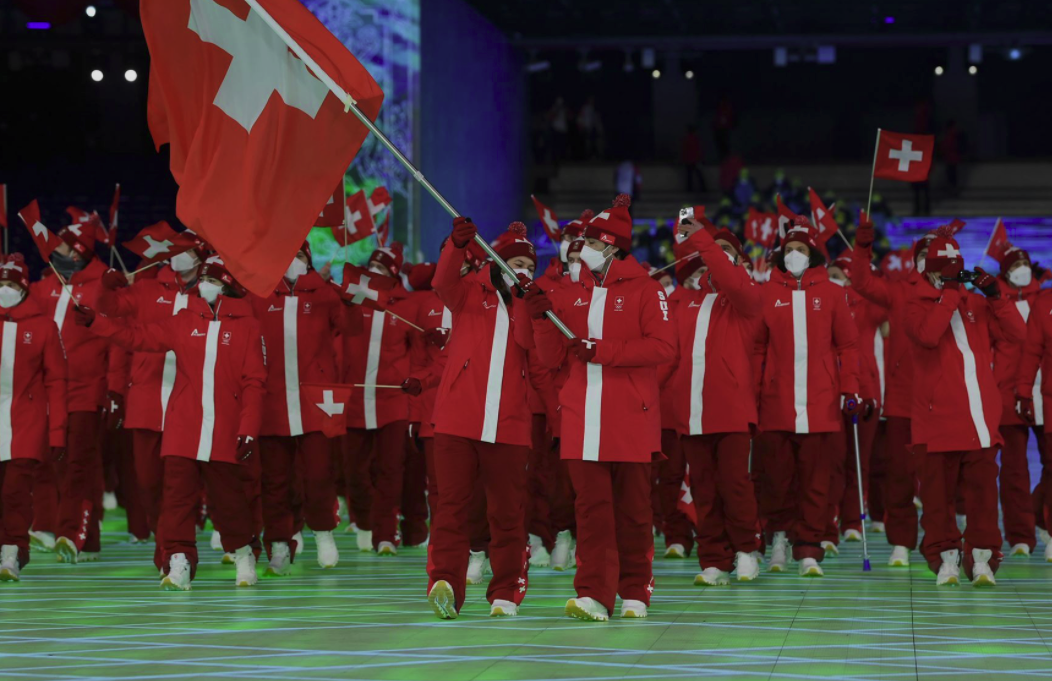International Women’s Day 2022: Celebrating Women at the Olympic Games

08 Mar 2022 – On International Women’s Day 2022, the International Olympic Committee (IOC) is taking the opportunity to celebrate the progress made towards gender equality at the Olympic Games, and to look ahead at what still needs to be done, on and off the field of play.
The Olympic Games are one of the most powerful platforms for promoting equality and inclusion, and for empowering girls, women and athletes in all their diversity. The Games have grown to be the largest gender-equal sporting event in the world, and by championing strong female role models, they help break down barriers to pave the way for a more equal and inclusive society.
Just last month, the Olympic Winter Games Beijing 2022 made history as the most gender-balanced Winter Games yet, with women accounting for a record 45 per cent of the athletes.
This was achieved thanks to a number of initiatives led by the IOC and delivered in partnership with Olympic Movement stakeholders, and it is just the latest step in the collective push towards gender equality at the Olympic Games.


The background: pioneers and milestones
It has been a long journey to get to this point.
In 1900 in Paris, Swiss sailor Hélène de Pourtalès became the first female Olympic champion, as women took part in the Games for the first time. Only 22 women competed across five sports – tennis, sailing, croquet, equestrian and golf – and they represented just 2.2 per cent of the 997 competitors.
Over the years, building on the impact of pioneers like De Pourtalès and those who came after her, challenging the status quo, women’s participation at the Games has steadily increased. At the Olympic Games Amsterdam 1928, the percentage of athletes who were women had risen to 10. Almost 50 years later, at the Olympic Games Montreal 1976, it was 20 per cent. And by Atlanta 1996, this had reached 34 per cent.
Throughout that period, and for more than a century now, women have been breaking barriers and marking milestones, challenging stereotypes and gender norms, and blazing a trail for women’s sports.
But over the past 25 years the pace of change has increased rapidly, as the IOC has encouraged and worked tirelessly with National Olympic Committees (NOCs) and International Federations (IFs) to increase female participation at the Olympic Games.


Towards gender parity at the Games
Key changes have included the opening up of eligibility in the various sports involved; quota places set by the IOC and filled by the IFs; an increased number of medal events for female athletes; and a directive that all NOCs must be represented by a minimum of one male and one female athlete at the Summer Games. Multiple new mixed-gender events have also been added to the Olympic programme to further promote gender diversity and equality, while also providing more medal opportunities for women, and more visibility for female athletes and women’s sport.
London 2012 was the first time that women took part in every sport on the Olympic programme, and by Tokyo 2020 they represented 48 per cent of the competitors at the most gender-balanced Games to date. At Paris 2024, there will be full gender parity on the field of play.
This trend has been mirrored at the Olympic Winter Games, with Beijing 2022 staging the highest-ever number of women’s events (46). In total, 53 per cent of the events in Beijing featured female athletes – up from 47 per cent at PyeongChang 2018 – and seven winter sports disciplines moved to gender balance for the first time. Just like the Summer Games, the aim is for the next Olympic Winter Games, Milano Cortina 2026, to have complete gender parity in terms of men and women competing.
The impact of this is monumental. Images from the Olympic Games are seen by billions of people around the world, creating icons and role models for women and girls – proving that if she believes it, she can be it. With this in mind, the IOC changed the rules to allow one male and one female athlete to jointly carry their country’s flag during the Opening Ceremony, sending a strong message of inclusive and gender-equal Olympic Games where women and men have equal prominence. Every opportunity provided for women’s sport and female athletes at the Olympic Games has a flow-on impact for the promotion of gender equality, and the opportunities that are given to female athletes around the world.
The next steps: beyond the field of play
But while great progress has been made in balancing the total number of athletes participating at the Games, the journey for gender equality is imperfect and ongoing, and many other challenges and gaps remain to be tackled.
Off the field of play, the Olympic Movement must advance pathways for more women to be trained as sports officials, to be given coaching roles, and to be elected to boardrooms. The IOC is working to address these inequalities through representation targets, leadership development courses, and advocacy and awareness campaigns, and by appointing more women to leadership roles within its own administration and key governance positions.
Outlining this approach, in 2021 the IOC published the IOC Gender Equality & Inclusion Report, which details the progress made in the last Olympiad and presents the new strategy and objectives for 2021 to 2024. These 21 objectives support the implementation of Olympic Agenda 2020+5, and build on many of the recommendations of the IOC Gender Equality Review Project. They will be implemented across the IOC’s three spheres of responsibility, with five focus areas: participation, leadership, safe sport, portrayal and resource allocation.
One tangible recent example of the objectives being put into action was an update to the IOC Portrayal Guidelines, which promote more balanced gender portrayal among sports organisations, rights-holding broadcasters and the international press. Ahead of Beijing 2022, the guidelines were translated into Mandarin for the first time and distributed to national media – something that was expected to have a major impact on gender equality in sports coverage across China.
As we celebrate International Women’s Day 2022 and highlight progressive case studies like this, we must recognise not only how far we have come, but how far we still have to go to reach full gender equality in all aspects of the Olympic Games. Hand-in-hand with the Olympic Movement, the IOC is committed to leading the way; to driving change in sport and society at large; and to truly making a difference for women and girls around the world.





